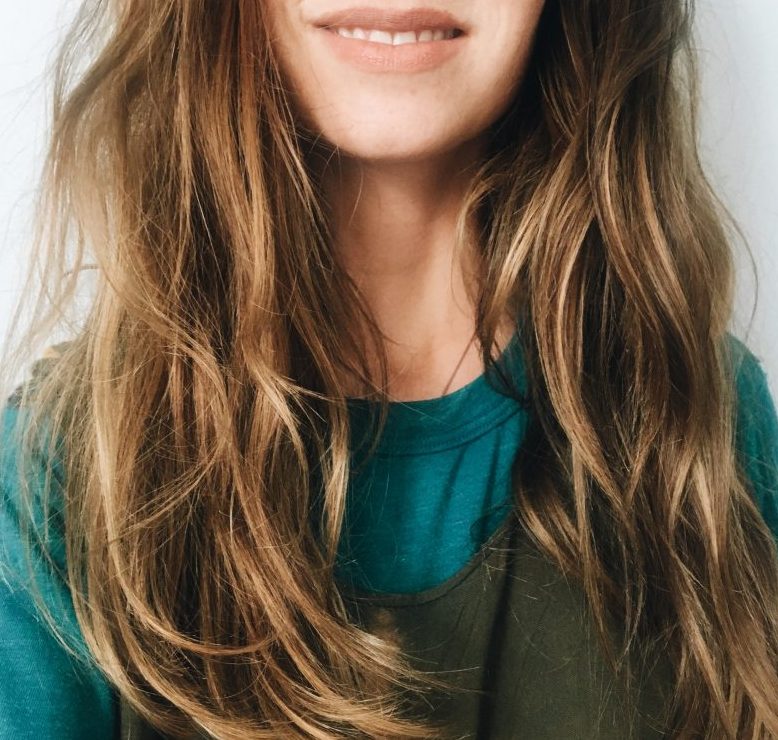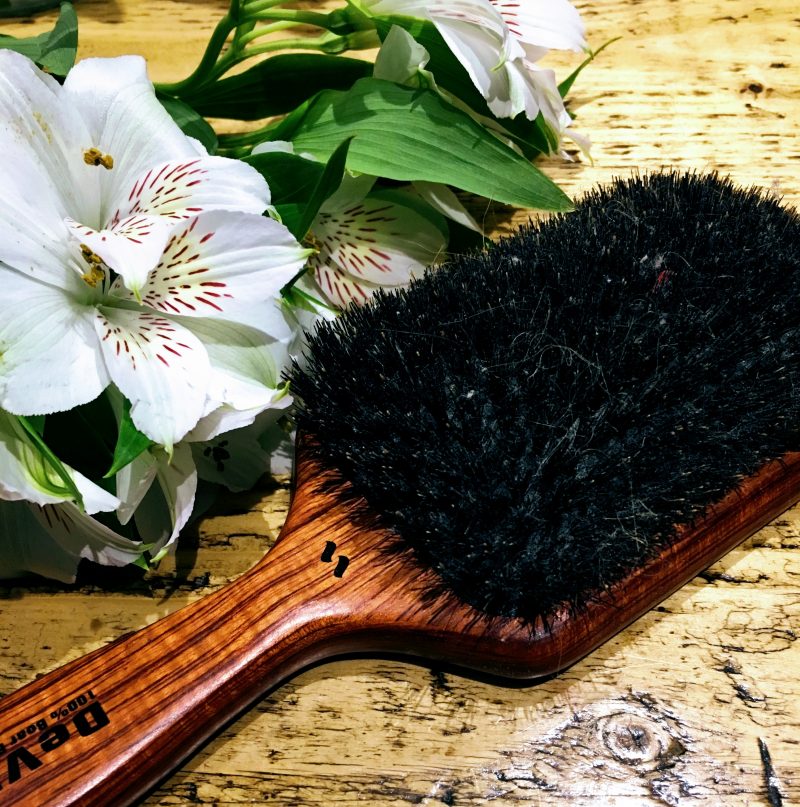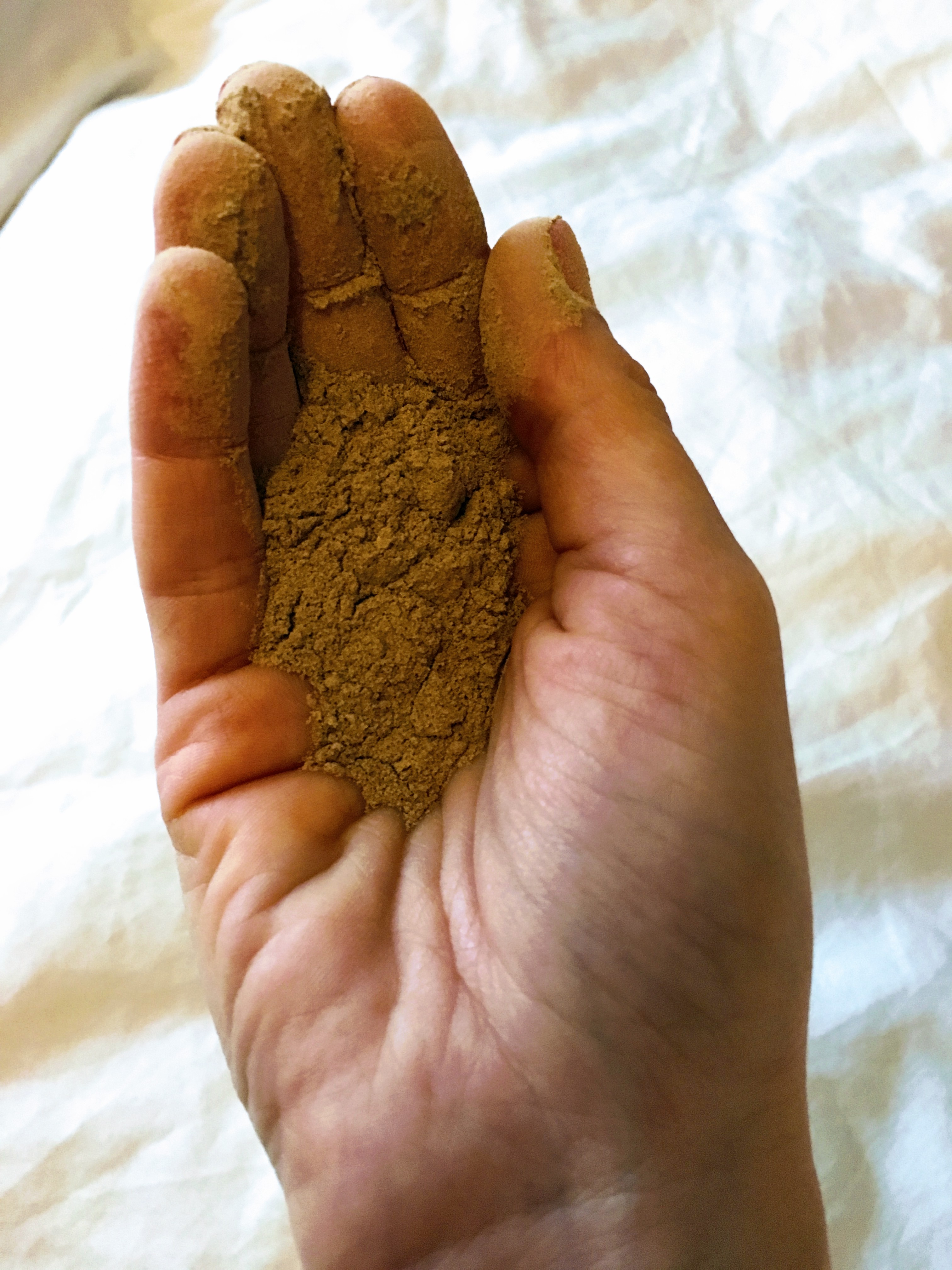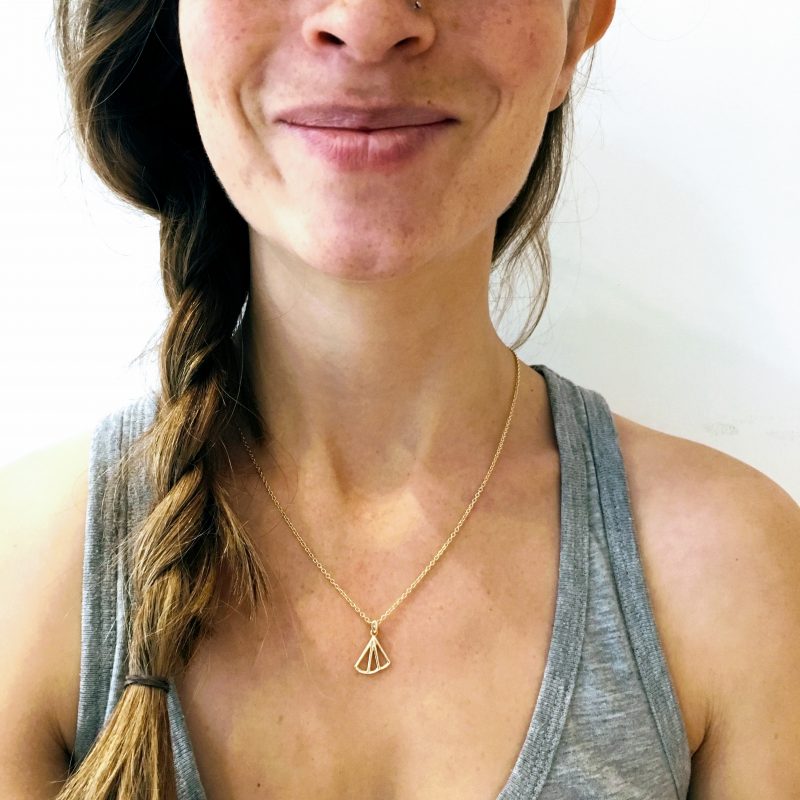 So if you’re wondering (my mum definitely was…) why I embarked on this experiment in the first place, it’s a combination of reasons:
So if you’re wondering (my mum definitely was…) why I embarked on this experiment in the first place, it’s a combination of reasons:
* An interest in ‘minimalist’ and simple living
* A desire to consume less
* A passion for ‘natural’ products (or put another way, really wanting to know what’s IN the stuff I put in and on my body)
* A dislike for the idea that shop bought shampoos strip your hair of all the nice natural HEALTHY oils that protect your hair
* A love for DIY
* A healthy dose of laziness
* A way to save money and time
Below is a description of each method I tried and my impressions regarding their effectiveness and ease. I last washed my hair with shampoo on October 17th 2016 (it’s now December 15th 2016) and I have no intentions of going anywhere but forward from here. (even though I think I’m currently in the ‘transition’ month which tends to be month 2 /3 and is when your hair gets most greasy. It’s kinda intense but I’m determined to get through it!). Here’s everything I’ve learnt and what you need to know if you’re considering going nopoo:
1. Just water
What the heck did I try? Just washing my hair with cold water and massaging my scalp.
Why this? It’s the easiest and most ‘basic’ method (aside from not washing AT ALL – the holy grail) which is a key objective for me of this experiment.
How easy? See above!
How effective? Hair felt clean for a day or so but it didn’t last
2. Banana mask
What the heck did I try? Mixing banana, honey, coconut oil and coconut milk, applying to my hair and leaving for half and hour, then rinsing out.
Why this? Bananas are very rich in potassium which strengthens hair, they are said to help repair damaged hair and because bananas contain natural oils and 75% water, they are also great for moisturizing hair. On top of that, coconut milk has a tonne of antioxidants, coconut oil is very high in vitamin E and healthy fats to encourage shine, and it’s also said to help with dandruff. Finally honey is said to help hydrate hair and lock in moisture. All in all, this is just a bunch of good stuff.
How easy? It took me about 5 minutes to make the mixture but it was quite messy to apply (and banana stains are not cool!)
How effective? This method was no good for me – it made my hair super greasy and gloopy (think that was the honey)

3. Shikakai
What the heck did I try? Making a paste with shikakai, massaging it into my hair then rinsing out
Why this? Shikakai is a shrub that grows in India and like apple cider vinegar (more on that below…), has been used for centuries for cleaning. It contains antioxidants essential for hair growth and is very high in vitamins and is thought to strengthen hair at the roots. Shikakai also has super low PH levels so it won’t strip your hair of its natural oils and also works to help detangle.
How easy? It made a fine mess in the shower (it’s a brown grainy powder) and it really stung my eyes.
How effective? It made my hair feel clean but it didn’t get my grease spots out.
4. Bicarbonate of soda + Apple Cider Vinegar
What the heck did I try? Mixing 2 tablespoons of bicarbonate of soda in 500 ml of water, sloshing that over my hair, rinsing, then 1 part ACV to 4 parts water (mixed with some essential lavender oil), sloshing that over, then rinsing with cold water. Then whilst my hair was still really wet, combing through it with a large comb
Why this? Baking soda helps remove dirt and dead skin cells without stripping all the natural oils away like conventional shampoo does. Apple cider vinegar has been used for centuries for various health reasons from getting rid of acne to helping cure indigestion. As I write this, I have a bit of a cough so will be making this tomorrow to help. Apparently it was one of Cleopatra’s favourite beauty products! It honestly has so many health benefits…With this method though, the ACV restores the PH level after the baking soda (which is very alkaline – this is important otherwise the hair will try to do it itself and create more grease).
How easy? Easy – but if I go with this method, I’d make it even easier for myself by keeping a small plastic tub of the baking soda in my shower.
How effective? It worked well and definitely eliminated some of the grease. It felt particularly clean the day after, especially once brushing through with my spornette brush the night before.
5. Soapnut shampoo bar
What the heck did I try? Wetting this soapnut bar, lathering it in my hands and then applying to wet hair all over including roots and tips before rinsing throughly out. You can do a couple of washes – just rinse every single time. Also, it’s really important to get loads of lather when you do wash.
Why this? Soap nuts grow on trees (they’re a fruit though, not a nut) and contain a natural soap called saponins that can be used to clean anything from your skin to your clothes and of course, your hair. There’s lots of recipes to make your own shampoo from the whole nuts but I got a bar for ease.
How easy? Super easy! Just lather up the soap in your hands and apply to wet hair. I ended up actually rubbing the bar against my scalp.
How effective? Really effective. My hair lasted a good week and felt light and clean plus I loved the lather from it like the traditional shop bought shampoo gives you (and let’s face it, that we like and are used to)
6. Coconut oil and sea salt
What the heck did I try? Mixing 1 teaspoon of coconut oil with some pinches of sea salt.
Why this? Sea salt adds volume, shine and helps greasy hair and the coconut oil is great for added softness.
How easy? Very – though I would recommend melting the coconut oil in a pot before adding the salt.
How effective? The coconut oil made it very greasy (perhaps I applied too much) and triggered a mini crisis…!

7. Rye flour
What the heck did I try? Mixing 2 tablespoons sieved rye flour with water to make a paste, covering my wet hair in it and then throughly washing out.
Why this? Rye flour is full of vitamins, nutrients and minerals for skin and hair and it’s also the perfect PH level for our scalp.
How easy? It took 5 minutes to grind it using a mortle and pestle (but you could do a bulk batch). Also, try to use organic rye flour and remember, the more finely ground, the better!
How effective? It definitely gave my hair a nice shine but I did struggle to completely remove it from my hair (this is probably because my hair was too tangled – be sure to brush it thoroughly before). It made my hair feel really silky and probably the ‘cleanest’ of all the methods.
8. Just apple cider vinegar
What the heck did I try? Mixing 2 tablespoons of ACV into a jar of water and sloshing it over my hair. No rinsing!
Why this? See above for the benefits of ACV…On top of this, Lucy from Lulastic and the Hippyshake mentioned to me that living in London, my water could be really hard (which means that it contains a lot of calcium/magnesium which is very harsh for hair). Although you can counteract this by boiling the water first, using distilled water or buying a shower filter to soften the water, none of these appealed. Lucy gave me a tip to try this acidic vinegar rinse to help neutralise the hard water.
How easy? Super easy!
How effective? Very. My hair felt in really good condition afterwards with no vinegar smell either (it smells when wet, not when dry).

So that’s my round up of the either methods I’ve tried to date -it’s been an amazing journey with highs and lows (#coconutoilgate was not easy!) and I’ll definitely keep trying other recipes. For now my current routine is a once weekly wash and I alternate between using a soapbut shampoo bar and the vinegar rinse. To be honest, I think I’m slightly in transition phase (where your hair recalibrates and can feel greasy / waxy and is very typical for around the 2 months stage, which is where I’m at) but it’s totally under control. Most importantly, my hair feels good, it’s got very long very quickly and it’s also a lot more wavy which I like. I’ve saved a bunch of time and money, and I LOVE experimenting with GOOD ingredients and saying goodbye to those weird words you have no clue what they mean found on the back (and in!) traditional shampoos and conditioners.
Here’s some final need to knows:
Scritching and brushing with the boar bristle is really important throughout – This is a method that consists of massaging your head using the tips of your fingers (see my video here) and then brushing with a boar bristle brush. I try to do this approx 5-6 times a week when watching TV or before bed and it always makes my hair less greasy in the morning.
Pick a period of time you don’t have a huge party where you want to look good – I’ve had a photoshoot, wedding and Christmas parties so it hasn’t been ideal!
Try it in Winter – Bobble hats will be your friend.
My hair never smells – I’m still washing it so it’s clean – it’s just oily – and oily with my natural scalp oils which I’m trying to give a chance to do their job!
Always comb out dry hair before trying any method
You’ll always have one tricky part – The most common spot, especially for people with long hair, is at the back of the head – this is my nemesis right now!
Everyone has different hair types – Everyone will therefore need something different, not to mention have different standards as to how they want their hair to look. I have pretty thick hair so my method will likely differ to someone with fine hair.
Variety is the spice of life – keep experimenting until you get it right!
Ingredients are important – I recommend getting hold of this apple cider vinegar and this baking soda.
Finally, head over to my video diary of going no poo and see some of my reactions at the time…the kids make some cameo appearances too and sorry in advance if the music gets kinda loud. I got a bit carried away !
Are you thinking about taking the plunge? What’s stopping you? Let me know in the comments below if you are either on the no poo journey or are considering starting it…
Emma x
P.S A Mum Accessory Life Saver and How To Make A Floral Crown


Hi Emma
I’ve just finished the journey of no more hair dye after tooooo many years, I’m thinking this is my next step! I’m also going tent camping for the first time at the end of the month so it would really help!
Thanks for all your thoughts – I wish so much that you’d been around when I was bringing up children! 😊
Hi Emma, this is such a great post and it inspired me to to try no poo. Ive been using the bicarb and ACV method for nearly 2 weeks and my hair is so shiny and feels great. I have a question though: I am going to the hairdressers next week to have a colour put in and I wondered if you know of any issues with this method when combined with hair dye? I’m wondering if I should wash my hair with shampoo prior to going to the hairdressers to avoid any potential reaction with the dye? Any info would be gratefully received 🙂
I just took the plunge and stopped washing my hair with shampoo last week. I’ve never used any shampoo with my 4 kids (except when they had vomit in their hair!) and all of them have lovely hair, even my hormonal 11 year old. Since I stopped washing my hair it’s been liberating – much less time in the shower! And my hair is thicker as there’s less going down the plug hole! However it’s feeling really cloggy and itchy. Thanks for your tips, they’ve helped me realise that I do need to find an alternative product. Also that perhaps a hot summer is not the best time to try this, as I’m in for 2-3 months of greasy hair!! Maybe I’ll just try using shampoo less frequently. Weekly was fine as a schoolgirl, I’m not sure why I ever went to every other day!
i swear, shampoo is just marketing jargon and its just soap like any other! have you tried bicarb and vinegar rinse? x
I know I am way late in just now discovering this, but I love this blog post and also loved watching your vid about it. I have been doing the no poo method off and on for several years and hope to make it permanent this time. I too have very hard water here in the California desert. Even though I am trying the water only method right now with difficulty, I have tried and enjoyed in the past using diluted ACV and then rinsing. I have been applying and leaving on ACV lately with success for other beauty needs too, even in place of deodorant. I am intrigued by the idea of leaving in the vinegar rinse and I have a couple of questions. About how much water to the two tablespoons ACV? 16 oz.? 32? And do you wet your hair first or just pour it straight on? Also do you do any scalp rubbing while doing this? Thank you so much for taking us on your informative journey.
Hey nicole! thanks for your comment. so i do 1 part ACV to 4 parts water (mixed with some essential lavender oil), and would pour on wet hair yep. i massage into hair and use a bristle boar brush too each night. hope this helps – good luck to you too!
Hi! I have been on and off with no poo for a few years now, and I am determined to finally make it work this work using a shampoo bar! Are you still doing no poo now and if so how have you found it in the long run and all the latest stuff ? Also your hair is incredibly beautiful ?
thanks – it’s been a journey for me too! of late ive started using shampoo again as my hair was feeling bleurgh but i fully intend to return again to nopoo (once my shampoo has finished!)xxx
Going to try the bicarbonate of soda and ACV combo. Back home after a week away on a retreat where I washed my hair twice(I’m usually a daily shower kinda gal) and realised just how much time and money I waste showering and washing my hair. Have post patrum hair loss and greasy hair and really want to give it a chance to rebalance. Must try the nutsoap as well. Great post. Thank you x
be careful with the baking soda it is really not a great idea for your hair it will break down the disulfide bonds and strip your hair of all its natural oils have a look here https://www.youtube.com/watch?v=ccIRPuvJWc8
Hi! I have been using rye flour as shampoo and apple cider vinegar as conditioner for 2 weeks now. After washing it, my hair feels very dry and not really nice. Is that because of the transition phase? Do you think it might get better?
it might be that that method is just not quite right for your hair type and that it’s drying it out… have you tried some coconut oil ? sounds like you might need a bit more moisture in there x
Really interested in this post. Trying to encourage hair growth after post partum hair loss and feel that natural shampoo is the way to go. I’m interested in trying the soapnut bars and wondered whether you needed to use a natural conditioner with it? Thanks
hey hey – no i dont use any conditioner at all – just the soapnut bar. give it a go – it could really help. perhaps also contact the manufacturer – my bar is from soapnuts.co.uk – good luck!
I love the idea of this!! I have so many shampoos in our cupboard and hate clutter. I also think the more I wash my hair the greasier it gets so then have to wash it more. Urgh. I may try a few of these. I like the idea of coconut oil and seasalt might play around with amounts. I also have a problem ‘nest’ let’s say, at the back of my hair. Your hair looks so clean and natural in pictures 🙂 love it!! Xx
ah yay! give it a go…you have to play around and see what works best for your hair… there are so many different possibilities… and YES – reduces all the bottles of shampoo and conditioner which is so nice too x thanks for reading and commenting lovely!